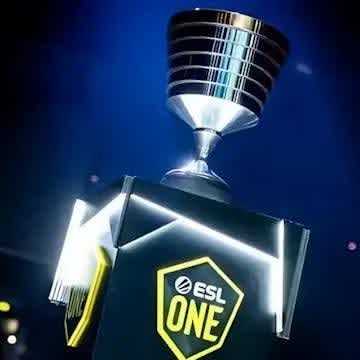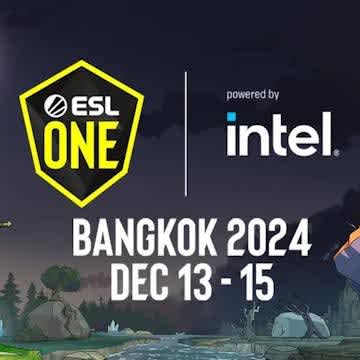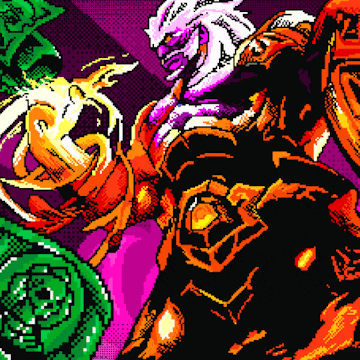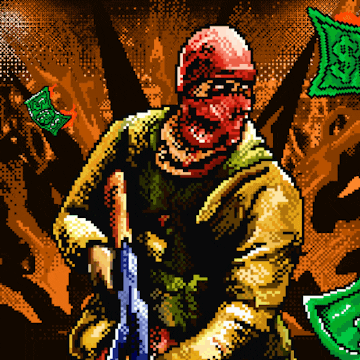OG, VP and the many kinds of confidence
In the 1994 classic “Speed”, Sandra Bullock and Keanu Reeves are trapped on a bus wired with explosives. The bomb is rigged to go off if the bus slows down beyond a certain point or if any passengers exit the bus. The protagonists must find a way to maintain their current speed while trying to think of a creative solution to escaping the inevitable, having to manage the emotions of a bus full of panicked passengers at the same time. Meanwhile, Jeff Daniels searches for the bomber.
Playing high stakes Dota 2 feels a bit like this: complex problem-solving under intense pressure against the backdrop of continuous action. The difference is that professional Dota 2 players have to actively decide to get back on that bus, together, over and over again. It almost seems insane. Why do they do it? There’s a unique kind of satisfaction to be obtained by overcoming this type of ordeal, but it takes a certain kind of person to believe time and time again that they will. For this reason, it’s not surprising that successful Dota 2 players all have access to the most powerful tool for overcoming complex high-pressure situations: confidence.
Nobody succeeds in Dota without confidence. That much is a given. However, this statement is too weak to capture the sheer magnitude of the role it plays in the professional game. It’s also too shallow to properly dig into what confidence is or how it works. The goal of this article is thus to unpack the role that confidence has to come to play, and discuss how the different variations of confidence have different limitations on what they can do for you.
This has been my pinned tweet for all of 2019. Every team to win a TI – with the exception of Newbee in 2014 – has had a unique claim to a powerful brand of confidence going into their respective events. My tweet focused on the post-2013 era mostly because there was a marked change in the Dota 2 landscape at that point, with international LAN events becoming substantially more normalized.
Remembering our forefathers
However, we could easily talk about Na’Vi, whose core was comprised of the former DTS team that had dominated western Dota 1 for some time before the first International, and who had the unique advantage of having literally enjoyed more hours of exposure to the game than any other team (recall, Dota 2 was not yet in open beta before the first International and most teams competing at the event only got access to it a few weeks prior).
iG competed in TI2 with arguably the best individual players in four out of five positions, including Ferrari and YYF whose performances would become defining of how their roles were played for years to come.
Alliance had a strategy that nobody could beat. They dominated the entire year ahead of TI3 and, sure enough, that very same strategy won them the Aegis.
The point is that for almost every TI winner, there is an easy way to frame their victory with respect to a deep well of confidence they were able to tap into. Now I’m not saying that confidence alone wins championships. All of the aforementioned teams also had access to premier level players with cutting edge mechanical ability and a strong sense of team identity. The point really is that as the game has developed, these aspects have become more and more ubiquitous.
Read more: OG’s second International and the nature of winning TI
If we look to today’s game and try to figure out which lessons to apply from previous TI winners, we certainly don’t focus on mechanical ability. Why? Because the top tier Dota 2 players of today all have excellent mechanical ability. From that perspective, all the best teams are good enough to win TI.
With that baseline established, the difference makers have moved from the individual elements of the game to the team elements of the game. Similarly, mechanical skill, though important, is increasingly less decisive than mental strength. When we combine these two statements, we begin to get a picture of why OG have recently become the first team ever to win not just two TIs but indeed back-to-back TI championships. While all other TI winners have also had access to a supreme level of confidence, it is OG’s that has been uniquely based within the team itself rather than one particular aspect of it.
The Tragedy of Virtus.pro
To truly highlight this point, a discussion of Virtus.pro will offer a useful contrast. There is no doubt that they have been the most dominant team of the last two DPC seasons. Sadly, because of how TI-focused the Dota 2 discourse is, they will more likely be remembered as the team that couldn’t play at TI, rather than the team that couldn’t be stopped outside of it.
From one perspective, the difference between OG being the greatest team of all time and VP being the greatest team of all time is nothing more than a question of competition format. If Dota 2 functioned on a league system, the roles would be completely reversed. But it doesn’t. The International is Dota 2. And it’s precisely the weight of that statement that separates these two teams. An event so big that it consistently eclipses all other esports events carries a huge amount of pressure. OG have shown they can bathe in that pressure, thrive on it, and even weaponize it. VP, on the other hand, have succumbed to it time and time again. So dramatic was their failure at TI8 that they decided to overhaul their entire team structure by switching the captain and drafter role to Ramzes while also replacing coach Artstyle with ArsZeeqq.
Again, their season was dominant, this time narrowly missing the top spot to Team Secret. And again, they collapsed at TI. From the team’s perspective, they’d taken the most drastic measure possible and still ended up with the same result. As such, the team split. The new VP roster have since failed to qualify for the first Major of the 2019-2020 season, something that was almost unfathomable in the previous two seasons.
It’s a very common thought process that leads to Dota 2 teams splitting: “we’ve tried everything”. Only, in most cases it simply isn’t true. VP have since released a largely unfiltered look into the inner workings of their team at TI9. The 30-minute video makes it obvious that the players did not have healthy relationships with one another. It’s easy to see that this team had juggled significant issues for a really long time. As with most successful Dota teams, the victories cover these up. They stem the bleeding. It is very rare for teams to be especially reflective or proactive about changes while their results are good. In this sense, winning a lot can actually be bad for a team that has serious issues, because by postponing the confrontation with those issues you only ensure that they eventually burst to the forefront in a much more dramatic fashion.
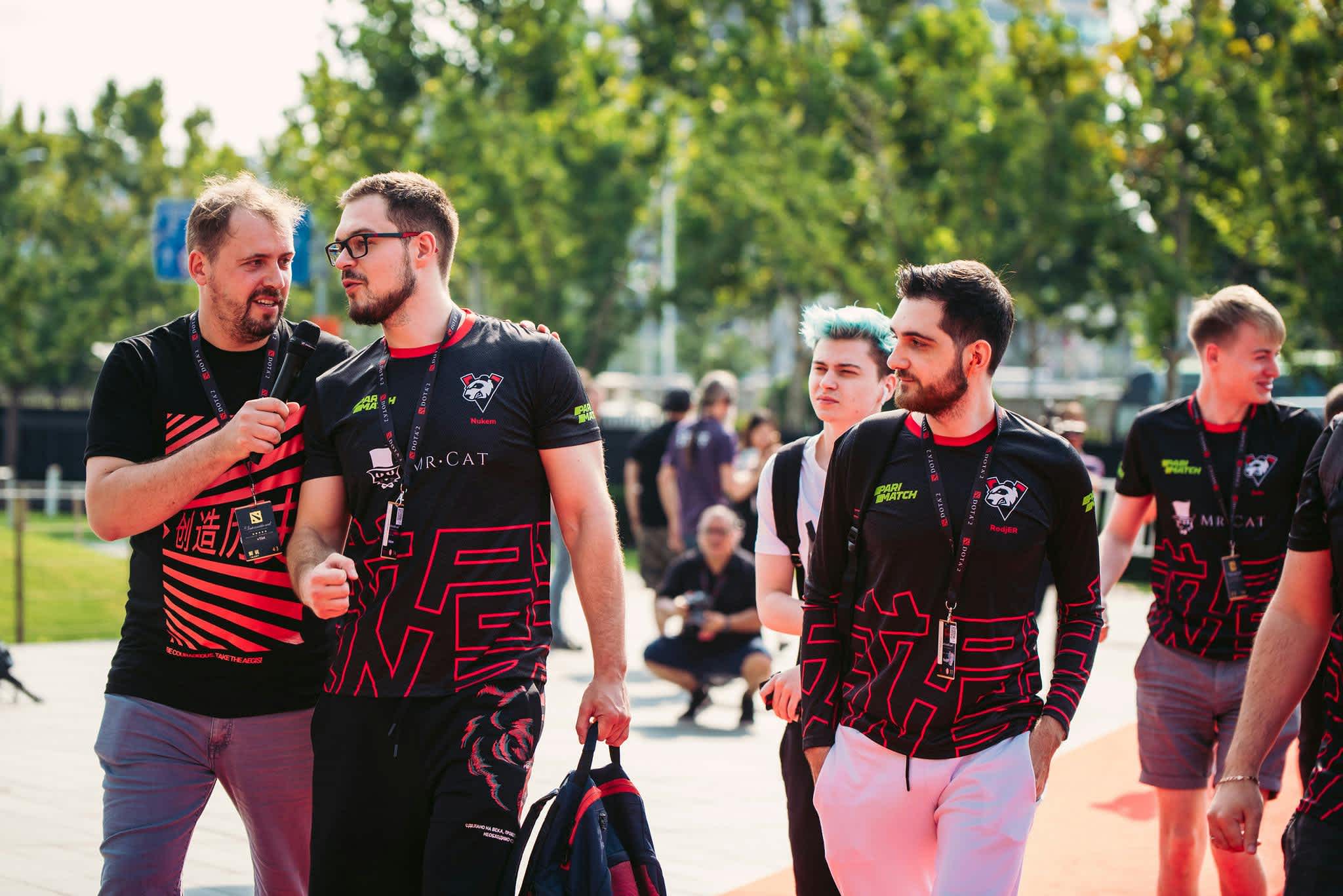
The thing that struck me most about the VP documentary is how frequently we see players making calls with question marks at the end of them. This is a major red flag. To be clear, it’s important for players to be able to ask each other questions. It’s also important for people to take responsibility and make calls. What’s damaging is when the two intersect. If you take your mind back to Keanu Reeves and co. trying to navigate the speeding deathtrap of a bus situation, imagine what would happen if he began asking the trembling passengers what they think should be done. Instead of allaying their fears and galvanizing them into a team, he’d practically be stoking the flames of panic. It’s easy for people to feel focused and on track when they know what is happening is part of some kind of plan. But when the person with the plan starts asking questions about how their own plan should look, you no longer have a barrier between your own anxiety and the situation causing it.
The same thing happens in a Dota team. Uncertainty is extremely contagious, and as soon as someone who is feeling uncertain shares that feeling with the team, the chance of other players becoming uncertain increases very quickly. Normally, it is at this point that leaders would step in, reassure, and take control. But when that feeling is coming through the very calls that are supposed to pull the team together, the entire team can lose its belief in a matter of seconds.
Read more: Where are the different TI winners today?
Perhaps the big question is where the original uncertainty came from? In this case, the answer is simple. The status of the International is such that any player participating in it constantly wrestles with immense pressure. The difference is that some find ways to overcome it, even harness it, while others do not. By their own admission, VP was more or less a team of big egos. Their confidence came from belief in themselves. But when your belief in yourself falters, you can’t be reassured by that very same thing. What helps is having a belief in something bigger than yourself, for the moments where your ego isn’t enough. What helps is believing in your team. This, I think, is the fundamental difference between the VP and OG of the last two years. OG have repeatedly shown that they draw confidence from each other, rather than just from themselves, and this I think is perhaps the key ingredient to their success.
The Power of Friendship
This is a phrase that I hate to hear in Dota commentary because it so often does the job of replacing meaningful analysis in a moment where so much more can be said. Those who have been around for a few years will recall how the popular narrative around CDEC’s TI5 run was “the power of friendship”. This story came about simply because people didn’t know how else to explain their sudden rise. We should have been talking about the cores they played around, and how they moved differently around the map than anyone else, and played to different timings. We should have been discussing that this team picked Dire in every single game in a tournament where not a single other team preferred that faction. But instead we got a throwaway line about how they must really, really like each other!
OG have given us an opportunity to revise this sort of narrative framing and say something more substantial about it. Liking your teammates is definitely helpful, but it’s not championship-winning material. For every group of friends that finds success in Dota, there’s another hundred that don’t. The mistake is thinking that friendship is the end in itself where in truth friendship is useful as a means to the end of achieving a kind of transcendental cohesion, a belief in the team that comes before any individual player’s ego or pride.
It’s worth noting that this belief had nothing to do with the roster’s playtime together in the case of OG. While the core of the team had been together for ages, the final playing roster was finalised mere months before TI8. Instead, what’s telling is the attitude taken by the leaders of the team, Ceb and Notail. Just listen to how Ceb recalls the grand finals of TI8:
“I don’t know how to describe it, it felt like we couldn’t lose. For some reason it felt like it was impossible to lose...some games, we were like two sides behind, 20k, I don’t even know how bad it looked - nothing was going for us. Yet, it felt like this game was fine. I don’t know how to put it. Maybe we’re just lunatics. It felt like we weren’t going to lose and we didn’t.”
This puts the difference between VP and OG into stark contrast. The former experienced crippling doubt even when they were objectively fine while the latter’s belief was so strong it defied the facts of the games they were in. To achieve that kind of belief in your team requires a substantial degree of trust, and to achieve that level of trust requires a deliberate focus on building and maintaining healthy interpersonal relationships.
In almost every team I have coached I have found my biggest contribution to be working on player relationships. How do they see each other, talk to each other and think about one another? In reality, this is a role best suited to a qualified psychologist. It’s telling that OG were the first professional Dota 2 team to hire a sports psychologist – because they were also very likely the team who needed it the least.
Unfortunately, we will never know what Virtus.pro might have become if they had prioritized doing the same thing: working directly on their relationships, rather than aimlessly switching around drafters, captains, and strategies only to achieve the same results time and time again.
Looking forward: Team Secret
The Team Secret of the past two seasons exists somewhere in between OG and VP. Like VP, they have had dominant DPC seasons but disappointed at TIs. Where they have been a step ahead of VP is in that their confidence is not just a matter of individual egos. However, it’s not clear to me that their confidence comes from the same kind of belief in their team as something bigger than themselves that we’ve just discussed with respect to OG. Secret, I think, get most of their confidence from their captain.
Read more: OG show that it’s worth only playing for TI
This is an improvement on the VP style of confidence because it stems from a shared source – and Puppey may well be the greatest Dota captain of all time, so if you’re going to base your confidence on your captain, he’s about as good as it’s going to get. However, there is still a major risk associated with this. What happens when Puppey feels the pressure? What happens when he makes a mistake, has a bad day, or just can’t tap into his own confidence for a few matches? Where is his confidence coming from? To my mind, this is the last boss that Secret need to overcome in order to become a TI-winning team. They need to develop an identity beyond being “Puppey’s team”. Unfortunately, this would mean risking their greatest strength, and toying with a dynamic that continuously brings so much success is a scary thing to do. For this reason, I’d expect they’d have a better chance of success if they hired professional help.
I don’t think either of these things will happen. I don’t think Secret will hire a psychologist. I don’t think they will make any attempt to adjust the power dynamics within the team. And that also means they’re more likely to follow the VP route than the OG route.
Photo credit: Valve (Flickr / Dota 2 The International)

